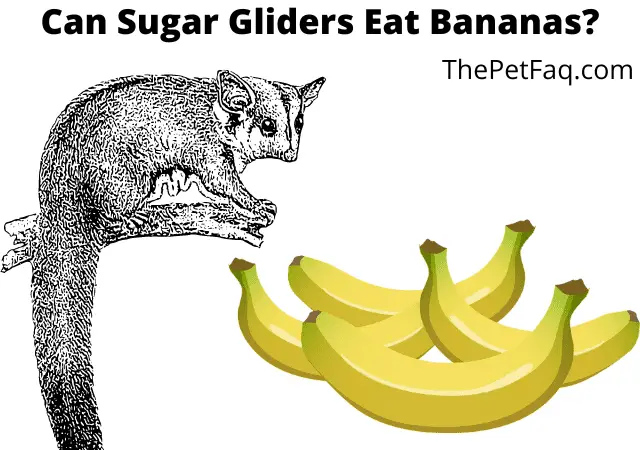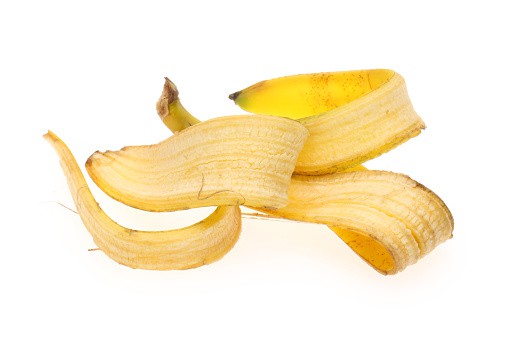Can sugar gliders eat bananas? If you just bought a sugar glider, or even if you already have one for a while now, it can be hard to figure out what they can and cannot eat.
After all, these creatures have a diet that’s quite different from your average pet. They’re exotic animals, and with that comes a different diet. Before you introduce anything new into your sugar glider’s diet, it’s always a good idea to do your research on whether or not they can safely eat the food you’re about to give them. If you do not, you can accidentally feed them the wrong food.
With that being said, if you’re here, you’re probably wondering if your sugar glider can have a bit of banana. It’s a question many owners have, and I was wondering the same thing myself. As a result, I did some research to find the answer.
Luckily, I found out that sugar gliders can eat bananas and it’s a good fruit to include in their diet. The fruit is low in calories and fat while being a good source of potassium, vitamin C, B6, and fiber. Most gliders absolutely love bananas but do make sure to remove the peel before feeding.
However, just answering the question of whether a glider can eat this fruit is not sufficient. I also want to discuss if they should eat this fruit and if they enjoy eating it. Keep reading, and discover everything you need to know about feeding this yellow fruit to your glider.

What’s in a banana?

Contrary to popular belief, bananas do not actually grow on trees, they grow on plants. The plants they grow on can grow up to 30 meters in height, but they’re not trees because they contain no wooden trunk! Nevertheless, the fruits of the banana plant are a highly nutritious, low-calorie food that’s a staple in the diet of many animals and humans.
Let’s take a look at what exactly is in a banana so that we can check if it contains anything that might harm our sugar glider. 100 grams of it contains the following nutrients:
- calories: 89
- water: 75%
- protein: 1.1 grams
- carbs: 22.8 grams
- sugar: 12.2 grams
- fiber: 2.6 grams
- fat: 0.3 grams
Those are the macronutrients, but they’re also rich in micronutrients; they’re a good source of the following vitamins and minerals:
- Potassium
- Vitamin B6
- Vitamin C
So, now that we’ve got an overview of what is in this fruit, we can see that it doesn’t contain anything that’s unhealthy for our sugar bears to consume and is a safe addition to their diet.
Can sugar gliders eat banana peels?

Now that we know that bananas aren’t harmful to sugar gliders, you’re probably curious if you can feed them the peels or if it’s better to remove it.
The best way to feed this fruit to your glider is to remove the peels, and only give them the actual fruit. There are two reasons for this. First, your glider will probably not even want to eat the peel. It’s not very delicious for them to eat since it doesn’t contain sugar so they’ll probably ignore it.
Secondly, the peel often contains pesticides. A banana peel is kind of a natural wrapper; it protects the food from any potentially harmful bacteria, pesticides, and other nasty things that you do not want your sugar glider to ingest!
Do sugar gliders like bananas?
So, now we know that bananas are safe for gliders to eat, as long as we remove the peel. However, all of this knowledge is useless if we don’t know if our glider actually wants to eat it.
Unfortunately, we cannot speak to our gliders directly (yet!) so we cannot ask them if they like eating a piece of banana. However, since sugar gliders love sugar and bananas contain quite a bit of it, there’s a decent chance that your glider will enjoy eating it.
Nevertheless, every glider has different preferences for what they do or do not like to eat. Some gliders will not touch bananas while others absolutely love it. The best way to find out is by simply putting some of it in their cage so they can try it out. Make sure to not put too much in their cage at once, it’s always a good idea to introduce them to new foods slowly. That way, if they do enjoy eating it, they will not overeat the new food and their digestive system can get used to it.
Other fruits sugar gliders eat
If your glider doesn’t want to eat bananas, fear not, for there are tons of other fruits that you can feed them. I’ll give you a list of ideas to help you get started:
- Kiwis
- Strawberries
- Watermelon
- Blueberries
- Grapes
- Cucumbers
To learn more about what you should feed your glider daily I highly recommend that you check out this sugar glider diet guide. It will teach you all about sugar glider nutrition, including a list of all the foods your glider can not eat.
What about dried banana chips?
Dried fruits contain a lot of added sugar, this is not ideal for your sugar glider to eat. However, in small amounts, you can feed dried banana chips to your glider once in a while as a special treat. It’s not as healthy as a fresh banana of course.
Always make sure to check the ingredients label to see if it doesn’t contain any chemicals or preservatives that can harm your glider’s health first.
How much banana can sugar gliders eat?
The ideal diet of a sugar glider consists of 20% fruit, 75% pellets, and 5% treats. Bananas of course fall under the “fruit” category, but that doesn’t mean that you can just make 20% of their diet consist of this singular fruit.
You should make sure that you give them a variety of different fruits because they all have different nutritional profiles; by giving them many different kinds you will ensure that they get the optimal amount of vitamins, minerals, and other essential nutrients.
With that being said, bananas are a good fruit to include in the assortment of foods you feed them and are definitely something your glider should eat.
Conclusion: can sugar gliders eat bananas?
So, now that we’ve gone over everything we can conclude that sugar gliders can eat bananas without any issues. The fruit is low in calories and fat while being high in fiber and several vitamins. This makes them an excellent snack for your glider to eat. Make sure to remove the peel and cut it into small pieces before feeding. Most gliders like eating it, but if yours do not, try giving them some other fruits instead.
I hope you found this overview useful and that it taught you some new information about what you can feed your glider. If you’ve got any questions or suggestions to make this guide more complete, I’d love to hear it!
- How Long Do American Eskimo Dogs Live? Important Factors and Care Tips - September 29, 2023
- Do American Bulldogs Need Grooming? Essential Tips and Care Guidelines - September 29, 2023
- Do Bengal Cats Enjoy Playing? Essential Tips for Keeping Them Active - September 29, 2023